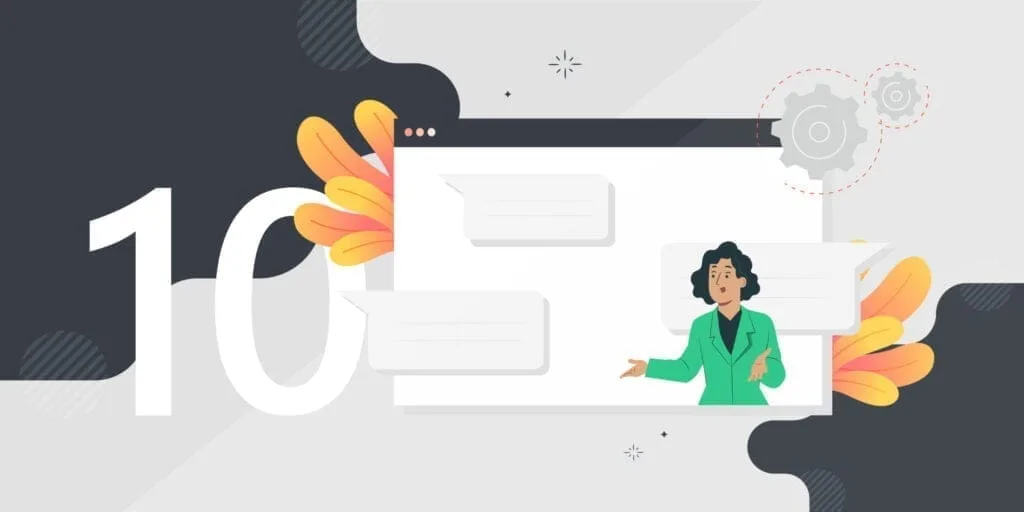
In today’s business environment, CIOs have become essential partners to the business — the importance of their expertise in directing corporate strategy is valued more than ever. At the same time, more CIOs are realizing they can’t provide proper IT governance without fully understanding their organization’s IT estate at any given moment. Case in point: in 2017, the ITAM software market was valued at over $750 million, with predictions estimating $2.19 billion by 2026 — nearly a 300% increase!
In fact, partly due to the effects of the pandemic, CIOs are adjusting their spending priorities overall, including significant investments in data and business analytics, security and risk management, cloud-based enterprise applications, and customer experience technologies.
As you guide your organization through the many changes driven by the widespread adoption of Cloud Computing, WFH, and other symptoms of the Digital Revolution, some issues, like managing cost and security, may look familiar. But others, like the rapid rise in remote work brought on by the global pandemic (but likely to continue far into the future) present new obstacles and opportunities.
As you look for ways to balance IT cost and security with the need to maintain business agility, it will be critical to develop a single source of truth to inform all IT scenarios and strategic decision-making across the entire organization. For decades, ITAM tools have promised to deliver this and underwhelmed us with their impact. A new approach is needed,
and ITAM 2.0 is designed to overcome the barriers that plagued the first generation of tools.
To help you develop the right ITAM solution for your organization, here are 10 questions we recommend you ask your teams.
1. Are we prepared for sustained remote working?
Given the continuing uncertainty of the pandemic and vaccine rollout, it is virtually impossible to predict when, how, and to what degree businesses will return to the workplace. We anticipate that many enterprises will emphasize long-term flexibility with hybrid working models.
For virtually every organization, some degree of remote work is here to stay, placing security and data protection squarely in the spotlight and tasking IT managers and technicians with ensuring business networks are secure and employees are kept safe when they’re not on the corporate network.
Securing your remote workforce can be a challenge, but it’s possible when you have the right tools. Learn more in our related blog post on governing the extended security perimeter.
IT governance in today’s environment requires maintaining a single source of truth that contains the depth and breadth of data necessary for all scenario’s, including security outside and within the corporate perimeter.“
Roel Decneut, CMO, Lansweeper
2. How do we optimize IT costs while maintaining business agility?
One of the side effects of the pandemic has been additional pressure on CIOs to control their IT budgets while enabling remote work at scale. When faced with such pressure, it’s crucially important to avoid knee-jerk, short-term cost-cutting measures that may diminish the organization’s ability to compete.
Often, the potential benefit of long-term cost optimization justifies additional short-term investments in IT. CIOs must find a strategic balance between containing costs and providing the business with enough agility to innovate. Maintaining an overview of your IT estate during a fast-tracked digital transformation process is key to optimizing costs.
3. How do we enable digital transformation?
Moving forward, companies will be increasingly reliant on cloud platforms and the economies of scale that drive machine learning and other emerging innovations. ITAM is an essential enabler of your digital transformation journey. Before you can move to the cloud, implement AI-driven solutions, or effectively digitalize, you must have an accurate picture of the resources available, the data you gather and keep, and the topology of your IT landscape.
Naturally, the cost is an essential consideration. Learn how we believe balancing short-term cost reductions with long-term cost optimizations is essential to the digital transformation journey.

4. Can we effectively manage employees’ personal devices?
Whether it’s a smartphone brought into your workplace or a personal laptop used to access your network remotely, mobile device management (MDM) is one of the most significant challenges facing organizations today.

Effective MDM helps you improve data security by monitoring and securing any smartphone, laptop, or tablet used on your network. This is especially crucial given the rise in BYOD (Bring Your Own Device.) And, as noted above, the rise in remote work is only going to amplify this need. Here’s a deeper dive into what MDM can mean for your business. And be sure to check out our Rogue Device Scanning with Asset Radar, which instantly detects and records devices connecting to your network, 24×7.

“The dividing line between Personal vs Company assets will continue to become more blurred. Even before the current crisis, it was difficult for people to keep their personal devices separate from their work. Now it will become nearly impossible. The only way a company will maintain coherent and accurate ITAM is by making sure it knows exactly which assets it owns and precisely where those assets are located at any given time.”
5. Can we finally ditch the spreadsheets?
According to Avanti, 43% of IT professionals are still tracking IT assets in spreadsheets.
It’s become a familiar habit for many—but it presents challenges, too. First and foremost, it’s a time-consuming task that pulls your teams away from higher-value activities. Not only is it labor-intensive, but because of the complexity and the “human factor” involved, it opens you up to data entry mistakes and inaccurate reporting.
The answer is, yes, you can ditch your spreadsheets when you adopt a modern ITAM approach to tracking IT assets. We wrote about it recently—check it out.
„Our approach is to build and maintain a single source of truth on the IT asset inventory. It is the baseline for recurring processes, projects of all kinds, and rapid action when needed. Creating a new inventory every time a new IT-specific use case is introduced is an enormous waste of time and resources.“
Maarten Saeys – CPO at Lansweeper
6. What impact will 5G have on my organization?
With Starlink recently being deployed, widespread IoT adoption, and 5G installations becoming common, we expect a couple of natural outcomes. First, as already noted, remote work will become even easier and more ubiquitous. And second, the amount of data we generate and share will increase exponentially.
In terms of ITAM, three questions rise to the top. How do we manage and secure 5G devices and data, ensuring that the devices are working properly? How do we distinguish legitimate devices from rogue IT? And how do we ensure that sensitive corporate data is protected?
7. Is my organization at risk from unmanaged and outdated devices?
The sheer pace at which technology is evolving means new solutions are added before old ones are even removed. In the past, all devices would have been on-premise and it would have been a relatively simple affair to remove them from the network for refurbishment and retirement. Now, with remote working and mobile workforces, ridding businesses of outdated & vulnerable technology becomes a touch more complicated.
„It’s essential that companies have and are able to maintain a centralized, complete view of their IT assets; or they will become liabilities to an organization’s security posture and ultimate
financial success.“Roel Decneut – Chief Strategy Officer at Lansweeper
8. How are we managing IT governance?
Regulations set forth by governing organizations provide guidance to CIOs and CFOs on how to best track and manage digital assets within their organizations. From CIS Controls™ to the IT Infrastructure Library, non-adherence with IT governance frameworks can result not only in increased risk but hefty fines, as well.
At the core of all of these frameworks is an essential activity—creating a complete and accurate hardware and software asset inventory. And that’s exactly what effective ITAM should deliver. Check out the thoughts we shared on this topic.
9. How has the shift to remote work affected our asset sustainability?
As the pandemic has shifted more and more workers from the office to work-at-home environments, many desk-bound devices, such as desktop PCs, are sitting unused and falling into obsolescence, which contributes to electronic waste.
As this environmental concern becomes more pressing, we expect many businesses to pivot to sustainable IT Asset Management practices that promote device reuse and eco-friendly disposal. If you’re concerned about your asset sustainability, reach out to talk about how we can help.
10. Do I have the right assets for the challenges I’m facing?
It’s one thing to identify the challenges and opportunities that ITAM presents for your organization. But another thing entirely is to assemble the assets—both people and technology—you need to manage your infrastructure effectively. What should you handle in-house? What should you outsource? And what’s the right mix of short- and long-term investments to maintain the ideal balance of IT cost, security, and business agility?
These are the questions ITAM 2.0 was designed to answer.
To keep pace with digital transformation and provide the level of visibility and insight needed to ensure security, manage costs, and support business initiatives, ITAM can no longer be an afterthought. In Lansweeper’s vision of ITAM 2.0, ITAM evolves from a niche specialty into the foundation for an efficient, well-managed IT organization.
We hope you’ll read our recent white paper on ITAM 2.0 where we explore Lansweeper’s ITAM 2.0 concept in-depth and explain how to create an IT asset system of record that can be leveraged across multiple scenarios to support any IT use case or business goal.
 Roel Decneut, CMO, Lansweeper
Roel Decneut, CMO, Lansweeper  Maarten Saeys – CPO at Lansweeper
Maarten Saeys – CPO at Lansweeper